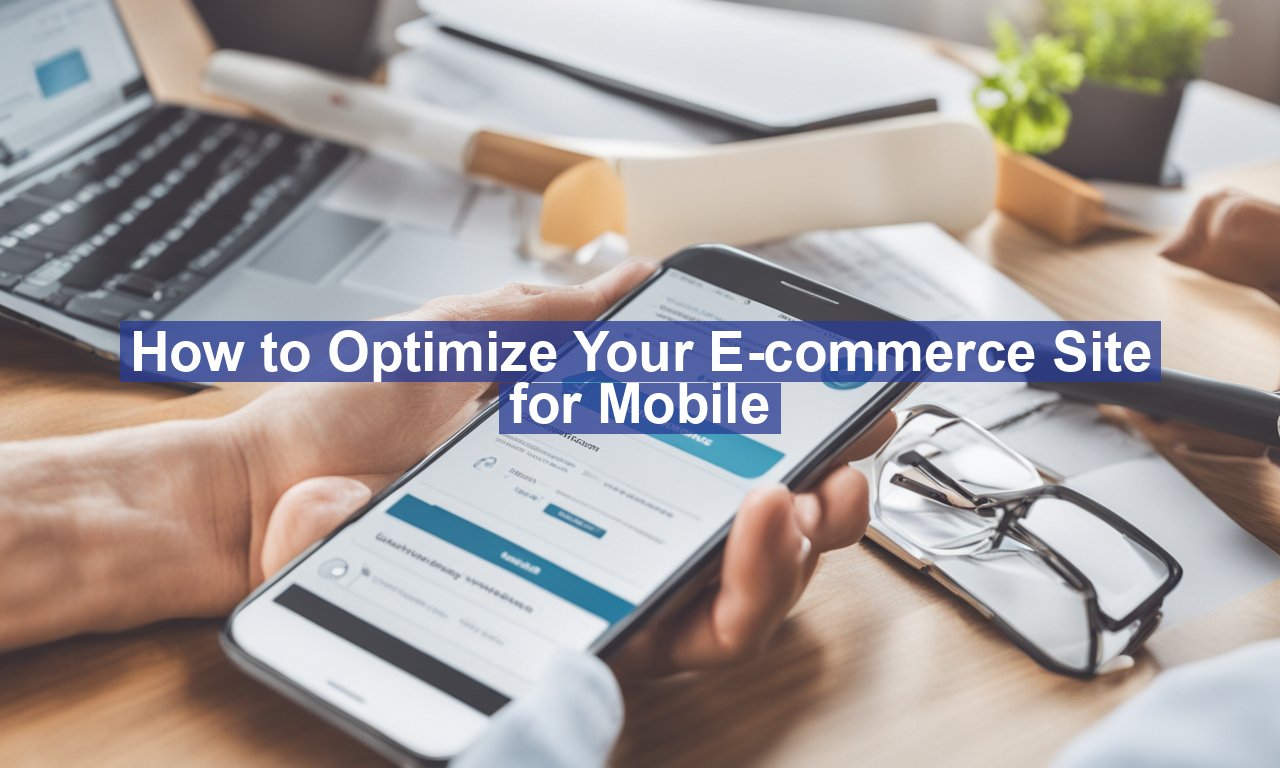How to Optimize Your E-commerce Site for Mobile, with more people shopping on their smartphones, it’s vital to in sure your e-commerce site is optimized for mobile users. Are you looking to improve engagement & increase sales? Then it’s time to get serious about mobile optimization. In this post, we’ll cover everything from mobile-friendly design and site speed to seamless navigation and security, offering practical tips to enhance your user’s experience and drive conversions.
How to Optimize Your E-commerce Site for Mobile? Step-by-Step Guide
Why Mobile Optimization is Crucial
Mobile internet usage continues to grow, and a significant percentage of e-commerce sales now come from mobile devices. If your website isn’t optimized for mobile, you’re likely losing out on substantial revenue and turning away potential customers.
Fast Load Times
Speed matters. A slow-loading site can be frustrating, causing users to abandon their shopping experience. Here are some straightforward ways to speed upon your phone site:
- Compress Images: Use tools like TinyPNG to reduce image file size without sacrificing quality.
- Minimize HTTP Requests: Cut down the number of elements on your page to reduce load times.
- Leverage Browser Caching: Set up caching to store temporary files, speeding up repeat visits.
By implementing these steps, you can significantly improve your mobile site speed, increasing user satisfaction and the likelihood of sales.
Responsive Design
Design plays a massive role in mobile optimization. Make sure your e-commerce site uses a responsive design that adjusts smoothly to different screen sizes. Responsive websites offer a consistent user experience across all devices, improving usability and fostering customer trust.
Use media queries in Cascading Style Sheets to modify the layout according to the device’s screen size. Moreover, consider employing a mobile-first approach to ensure the best user experience on handheld devices.
Easy Navigation
Navigating your site on the phone should be as smooth as butter. Simplify your menus & make sure they are touch-friendly. Here’s how:
- Optimize Menus: Use accordion-style menus or burger menus to save screen space.
- Large Touch destination: Ensure buttons & links are large enough for users to tap easily without zooming in.
- Sticky Navigation Bar: A sticky navigation bar at the top of the screen can help users move around your site more easily.
By simplifying navigation, you make it easier for users to find what they want, thereby reducing bounce rates and increasing engagement.
Streamlined Checkout Process
One of the major reasons for cart abandonment on mobile is a complicated checkout process. Make sure your checkout is seamless by:
- Reducing Form Fields: Ask for only essential information to avoid overwhelming the user.
- Offering Multiple Payment Options: Ensure you support various payment methods like credit cards, Apple Pay, and Google Wallet.
- Guest Checkout: Accommodate users to complete their purchase without needing to create an account.
Streamlining your checkout process can significantly reduce cart abandonment rates & boost your sales.
Mobile SEO
Search engines prioritize (SEP) mobile-friendly websites in their rankings, so don’t overlook mobile Search Engine Optimization (SEO). Here are key factors:
- Mobile-Friendly Test: Usage Google’s Mobile Phone-Friendly Test to check your site’s like-mindedness
- Optimize Meta Tags: Ensure your meta titles and descriptions are concise and relevant for mobile search.
- Avoid Flash Content: Adobe Flash is not supported on mobile devices, so stick to HTML5 for animations and videos.
Effective mobile SEO ensures that your site ranks well in search results, making it more likely new customers will find your business.
Enhanced User Experience (UX)
Creating a delightful user experience is key to keeping visitors on your site. Here’s how to make your mobile UX shine:
- Readability: Use legible fonts and appropriate font sizes for small screens.
- Whitespace: Ensure there is enough spacing between elements to avoid clutter and improve readability.
- Visual Hierarchy: Use headings, subheadings, & bullet points to structure your content for easy scanning.
A well-thought-out user experience (UX) keeps users engaged & encourages them to return in the future.
Security
Security should be a top priority for any e-commerce site, and even more so on mobile. Here’s what to keep in mind:
- SSL Certificates: Ensure your site is HTTPS-secured to protect user data during transactions.
- Two-Factor Authentication: Implement two-factor authentication for an additional tier of security.
- Regular Updates: Keep all plugins & software up-to-date to fend off vulnerabilities.
Ensuring robust security measures will build customer trust & safeguard their sensitive information.
Analytics and Continuous Improvement
Lastly, track your site’s performance and continually strive for improvement. Use tools like Google Analytics to monitor user behavior & identify pain points.
Regularly analyze metrics such as bounce rate, session duration, and conversion rate to understand how users interact with your mobile site. Use this data to do aware decisions & enhancements.
For more insights, check out this guide on web performance best practices.
Ready to give your e-commerce site the mobile phone makeover it deserves? Implement these strategies and watch as your mobile traffic, user engagement, and sales soar!


